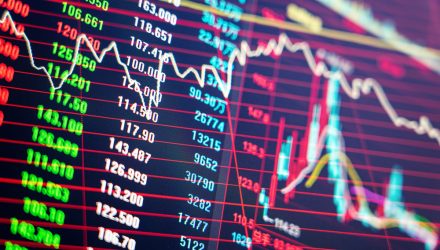Fixed income investors should consider an actively managed fixed income exchange traded fund strategy that is capable of maneuvering through a quickly changing bond market while generating attractive yield opportunities along the way.
In the recent webcast, Why Today’s Bond Market Demands Active Management, Greg Tornga, managing director and portfolio manager at Principal Global Asset Allocation, outlined the fact that rates remain low but a path to higher rates should be smooth, so bond investors shouldn’t expect a repeat of the so-called taper tantrum, as the Federal Reserve has been very transparent with policy normalization.
In light of the turbulence ahead, credit markets have remained resilient. The ongoing support has helped buoy developed markets, and the progress toward policy normalization will be slow, which should continue to support risk assets, Tornga said.
However, Mark Cernicky, investment specialist at Principal Global Fixed Income, warned that investment-grade corporates are riskier now than in the past, so investors should reevaluate passive investment-grade corporate exposure and consider an active approach. Specifically, Cernicky pointed out that risk is trending higher in investment-grade corporates as seen in the Bloomberg U.S. Investment Grade Corporate Index, which is now exposed to higher durations and a greater tilt toward BBB-rated credit.
Furthermore, Cernicky warned that the investment-grade market is inefficient, so there are opportunities for more skilled money managers to better navigate these muddied waters. Additionally, Cernicky pointed out that there are risk stratifications of investment-grade corporates with carry securities that may overcompensate investors and duration securities that may undercompensate investors.
Cernicky also argued that factor prioritization can help minimize tail risk. The bottom quintile of the U.S. IG Index exhibits a max drawdown of 12.7% with annualized returns of 5.5% and annualized volatility of 6.0%. In comparison, the top quintile of the benchmark shows a max drawdown of 6.4% with annualized returns of 5.9% and annualized volatility of 4.7%.
According to Principal ETFs, stratification and factor prioritization may help manage risk. Cernicky explained that when taking a top-down approach, Principal uses spread and duration to stratify the IG universe into risk cohorts, along with daily performance attribution by risk cohorts that enables assessment of top-down structural decisions and bottom-up security selection within cohorts. In addition, it comes with independent risk monitoring. When taking a bottom-up approach, Principal employs quality and value scores used to minimize tail risk while still maintaining a spread advantage over the index, takes forward-looking independent credit rating, and follows exit strategies when necessary.
Matthew Cohen, head of ETF sales team at Principal ETFs, argued that active management can help obtain alpha from structure, macro, and bond picking, while the top-down and bottom-up risk is designed to mitigate volatility.
Specifically, the Principal Investment Grade Corporate Active ETF (NYSEArca: IG) is an option that investors can consider. IG is an actively managed fund, a potentially beneficial trait at a time when demographic shifts could disrupt traditional corporate bond investing. The ETF tries to provide current income and capital appreciation by investing in investment-grade corporate bonds rated BBB or higher by S&P Global Ratings or Baa3 or higher by Moody’s Investors Service.
IG combines bottom-up independent credit research with top-down strategy, seeking alpha through credit selection, industry rotation, curve positioning, and a forward-looking, iterative process. This mechanism seeks credits exhibiting a stable-to-improving credit rating trajectory that may benefit from spread compression and income premiums, an approach that’s relevant in today’s corporate credit climate.
IG may include global exposures as its pool of fixed income securities covers foreign securities, corporate securities, securities issued or guaranteed by the U.S. government or its agencies and instrumentalities, and securities issued or guaranteed by foreign governments payable in U.S. dollars. Additionally, it may invest in other investment companies, including exchange traded funds that invest in fixed income securities.
Financial advisors who are interested in learning more about the bond markets can watch the webcast here on demand.
